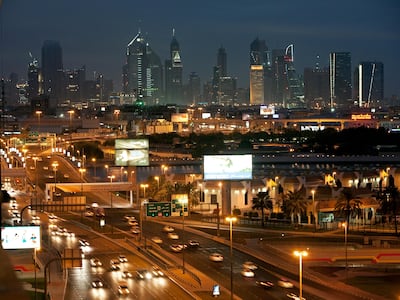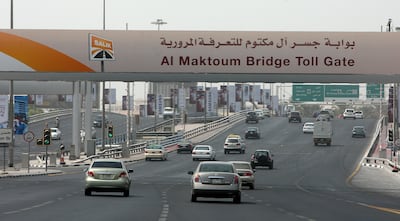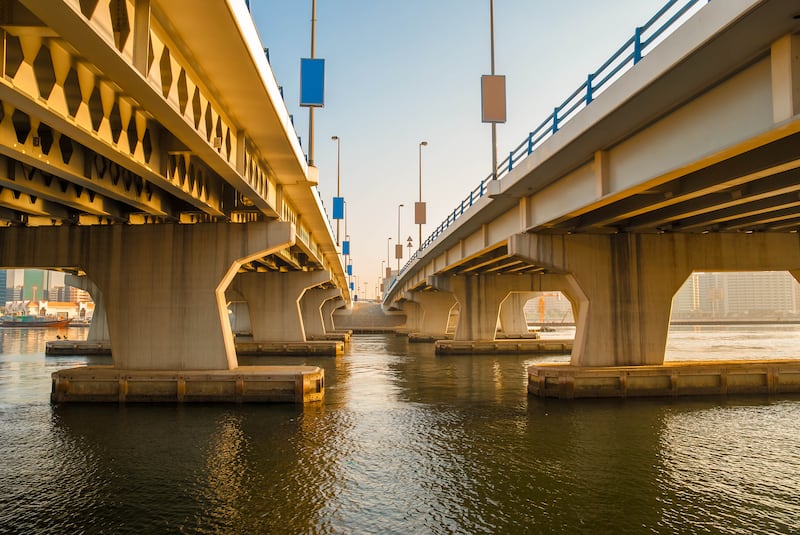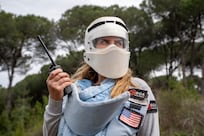The Deira-side entrance to Al Maktoum Bridge was once a landscape of blue-littered toll tickets.
For a decade after it opened in 1963, a toll was required to cross, particularly for vehicles travelling from that side. However, few were upset at the charge.
The bridge was pivotal for Dubai, presenting the first physical connection between Deira and Bur Dubai. People no longer had to use an abra to cross the waters or drive around the S-shaped inlet to get from one side of the bank to another. The bridge streamlined mobility and was revolutionary in Dubai's daily life. A toll was a small price to pay. After all, it contributed to the bridge's financing.

Plans for the bridge were unveiled as early as 1960, when British architect John Harris devised a town plan for Dubai, on the behest of Sheikh Rashid bin Saeed Al Maktoum, who was ruler of the emirate at the time. Harris saw the necessity of conceiving a bridge to connect the two shores and, within a few years, the bridge was built almost precisely where he suggested.
It's unclear how much the bridge cost, but various reports estimate it at $1.2 million. It may not seem like much, especially considering the large-scale projects that Dubai became known for in the following decades. But it was a pretty penny then. The bridge’s construction was initially financed by Sheikh Ahmed bin Ali Al Thani, the former ruler of Qatar, who was also Sheikh Rashid’s son-in-law. The Dubai ruler then raised the money by introducing the toll system.

According to a blog run by Len Chapman, who came to Dubai in 1971 and stayed for 30 years, toll tickets were “printed on blue paper” and sold as tear-off booklets.
Tolls were collected near the bridge entrance on the Deira side. “As vehicles approached the booth from Deira, their drivers waved a toll ticket out of the driver's window. They made no effort to slow down!” Chapman writes. “They simply judged when best to let go of their toll ticket so it floated in the wind and landed somewhere near the toll collector's booth. The toll collector rarely bothered to collect these scattered toll tickets. Just letting a toll ticket loose from a vehicle window was enough for the toll collector to know you had bought a ticket.”

This haphazard system resulted in the Deira-side entrance to the bridge turning “blue with the mass of littered toll tickets".
The tolls were collected until 1973 when the construction of Al Maktoum Bridge was paid for. Since then, the bridge has been expanded and modernised to keep up with the growing traffic needs in Dubai. New lanes were added in 2007, while the roads leading up to the bridge were also refurbished and widened. In 2008, a Salik toll gate was introduced on the bridge.
During Ramadan last year, the Roads and Transport Authority announced that Al Maktoum Bridge would be closed for five hours at night, six days a week. The move was part of maintenance work.
Since opening, Al Maktoum Bridge has been closed several times as part of maintenance and expansion projects.
And it's no longer the only bridge in Dubai. Though still a vital artery of traffic flow, it has been joined by four other bridges including Al Garhoud Bridge, Business Bay Crossing, Floating Bridge and, most recently, Infinity Bridge as part of the city's Al Shindagha Corridor Project.









